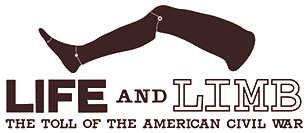
About the Module
Author:
Susan-Mary Grant is a historian of the American Civil War. She received her doctorate from the University of London in 1995 and is now Professor of American History at Newcastle University in the UK, where she has taught since 1992. Her first book, North over South: Northern Nationalism and American Identity in the Antebellum Era appeared with Kansas University Press in 2000, and since then she has published and co-edited a number of works on the Civil War era, including Legacy of Disunion: The Enduring Significance of the American Civil War (Baton Rouge: Louisiana State University Press, 2003), The War for a Nation: The American Civil War (New York: Routledge, 2006) and Themes of the American Civil War: The War Between the States (New York: Routledge, 2010).
Dr. Grant’s current research project focuses on the disabled veterans and the development of national identity in the United States after the Civil War. Some preliminary articles from this have appeared, including: “A Season of War: Warriors, Veterans and Warfare in American Nationalism” in Nations and their Histories: Constructions and Representations edited by François Gemenne and Susana Carvalho (London: Palgrave, 2009); “Reimagined Communities: Union Veterans and the Reconstruction of American Nationalism” in Nations and Nationalism (vol. 14 issue 3, July 2008); and “Reconstructing the National Body: Masculinity, Disability and Race in the American Civil War” in Proceedings of the British Academy (vol. 154, 2007).
Suggested Use:
Reconstructing State and Soldier: Disability and the American Civil War is essentially an interdisciplinary module, grounded in the history of the American Civil War but geared toward use by instructors and students from a variety of disciplinary backgrounds, including history, cultural studies, literature, the social history of medicine, and social science programs more broadly. Following an introductory class that allows students to position the subject of wounded Civil War veterans in the wider context of attitudes toward war veterans and disability generally in the mid-nineteenth century United States, the module enables them to develop their understanding of the physical toll of the Civil War from a variety of contemporary perspectives, including that of the soldiers themselves and of the surgeons and nurses who treated them.
The secondary readings for this module have been selected to provide a sampling of as broad a spectrum of scholarly assessments of the subject as possible in order to show how different disciplinary approaches can work together to produce a more rounded, but also more challenging interpretation of the wounded veteran’s experience during and after the war. Inevitably, this module on a nineteenth-century conflict addresses a topic that remains all-too pertinent today. It can therefore also be used as historical background for discussion of the longer-term impact of warfare on the individual and on the nation in the early twenty-first century, as well as for considering the changing experience and meaning of disability in different historical contexts.
This module has been devised to work alongside the Life and Limb: The Toll of the Civil War exhibition. It is recommended that students begin by familiarising themselves with the general history of the Civil War that the exhibition provides—the experience of camp life, of battles, the causes of many of the most serious injuries and illnesses that it details, and the frequency of amputations resulting from the impact of contemporary weaponry and, in some cases, surgical inexperience that it highlights. As students read through this material and contemplate the images presented, they may wish to consider the personal and medical response to injury, the type of financial and prosthetic support offered to disabled veterans, the motivations of those providing such support, and the extent to which both medical and material aid facilitated the veteran’s return to civilian life after the war.
Where Reconstructing State and Soldier: Disability and the American Civil War moves beyond the exhibition is in its emphasis on the psychological alongside the physical wound and on the post-war response to the war veteran in the context of reconstructing both individual bodies and the national body. In each class within the module students are provided with both primary and secondary source readings alongside questions for in-class discussion based on the readings. As students work through the module, however, additional questions will inevitably arise both from the class and exhibition material that they are working with, and not all of these questions will concern the Civil War. Users of this module are therefore encouraged to consider the implications of the material for the present day and for modern warfare.
Objectives:
At the conclusion of the module Reconstructing State and Soldier: Disability and the American Civil War students are expected to be able to:
- Demonstrate a basic understanding of the causes and treatment of physical injury during the American Civil War.
- Relate reactions to the war wounded to broader social responses to disability and the public perception of war veterans.
- Evaluate the extent to which psychological damage was factored in to treatment of and reactions to the war wounded in the mid-nineteenth century.
- Demonstrate an ability to read and interpret primary and secondary source materials.
- Analyze the relationship between post-Civil War national reconstruction and the representation of the Civil War veteran.


